Stackable Energy Storage: How Modular Batteries Work
Last Updated: 6th Jan 2025 By Finn Peacock, Chartered Electrical Engineer, Fact-Checked by Anthony Bennett, Licensed Electrician
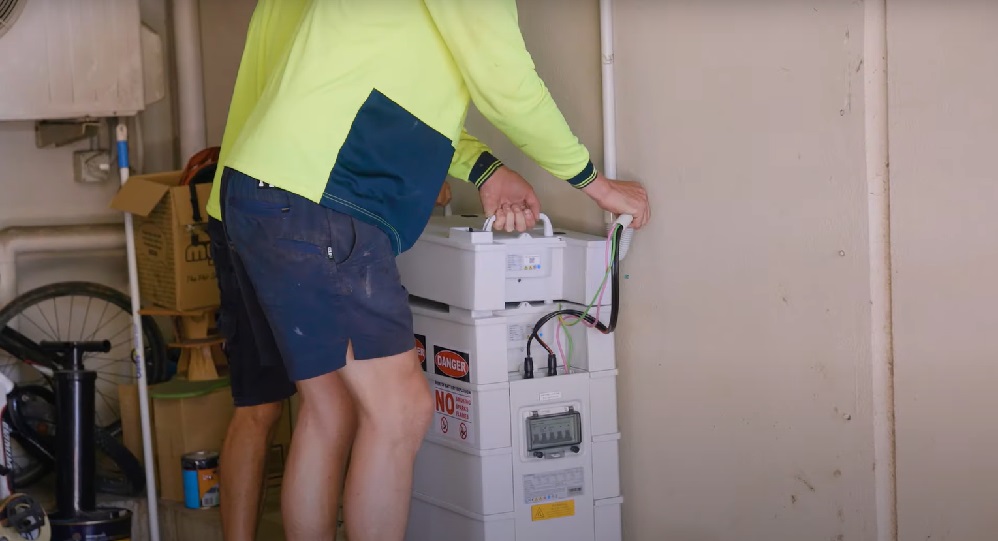
Think of modular batteries as Lego for energy storage. They’re made up of stackable or connectable units, so you can start with the basics and add more when you need extra capacity. No need to buy a massive, expensive battery from the get-go—just grow your system as your energy needs grow.
Table of Contents
- Why Go Modular?
- Modular Battery Limitations to Watch Out For
- Modular vs. Monolith Batteries
- How Much Do Modular Batteries Cost?
- Modular Hybrid Inverters: The Perfect Partner
- Are Modular Battery Installations As Easy As They Sound?
- Conclusion
Why Go Modular?
Opting for modular battery storage has several advantages:
- Scalability: Got a small solar setup now but planning to expand later? No worries. Start with lots of solar and a small modular battery, then add more storage as your needs multiply.
- Cost Efficiency: Modular systems allow for expansion in smaller, more affordable increments. For example, a Sigenstor 5 kWh battery module only costs around $3200, whereas a whole Powerwall 3 would cost you $13,600.
- Future-Proofing: Don’t overpay for storage you won’t use right away. Modular batteries adapt to your growing energy needs at a lower cost, as battery prices are expected to trend down.
- Easy Installation: Modular systems are plug-and-play (for professionals, don’t DIY it)—quick and hassle-free compared to the big, one-piece batteries.
In contrast, monolith systems are larger, single-unit batteries with set capacities. If you want more storage, you could add on—but the increments are coarse.
In the case of Tesla Powerwall 3, you’ll need to buy double, triple or quadruple the capacity. They’re heavy too—usually over 100kg—so unless you’ve been training for a Strongman competition, you’ll need a few extra hands or specialised equipment to install one. The virtue of monolith systems is elegant simplicity, but they don’t offer the finer adaptability you get with modular setups.
Modular Battery Limitations to Watch Out For
While modular battery systems are flexible and scalable, they have a few limitations to keep in mind:
1) More Connections = More Potential Failures
Having multiple modules means more connections, and this can increase the risk of something going wrong—especially with cheaper systems that rely on lots of manual cabling. Higher-quality options, such as those from BYD, Sungrow, and Sigenergy, reduce this risk with smart plug-and-play designs that automatically connect when stacked.
2) Minimum Module Requirements
Some modular systems won’t work unless you meet a minimum number of battery modules. For instance, the Sungrow SBR system can include a dummy module to meet the physical design requirements for three modules while only using two functional batteries.
3) Performance and Peak Capacity
If you’re counting on full backup performance during power surges, check the fine print. Many systems need more than the minimum battery stack to hit peak performance levels. Plan ahead to avoid under-sizing your setup.
4) Capacity Limits and Warranty Issues
While modular systems are scalable, not all are expandable. Some allow you to expand later, others don’t. Expanding a system after commissioning might void the warranty.
In any case, if you have a battery stack that’s naturally degraded 5% in two years, an additional new cell block will only perform as well as the legacy stack.
5) Physical Design Considerations
Modular batteries might seem easy to stack and grow, but physical placement matters. Avoid putting your battery modules directly under the inverter. If you expand the stack later, relocating components can be a hassle and add to installation costs.
Total capacity is also worth considering. Systems like BYD’s B-Box come in two types—HVS and HVM—which can’t be mixed. HVS can start smaller but HVM can build bigger setups, so you need to plan upfront where you want to finish.
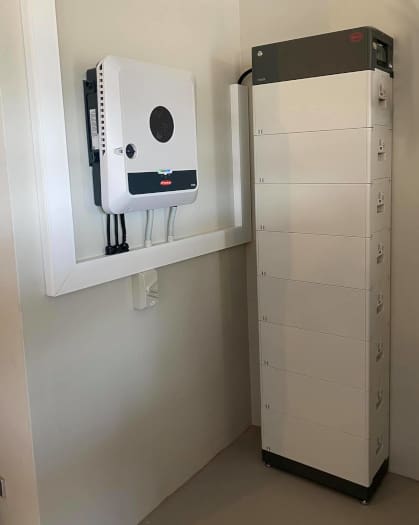
6) Modular Systems Can Face Inverter Capacity Limits
17 different DNSPs have different rules as to how much solar generation they’ll allow on the network. However, all the rules are based on inverter capacity, not the actual size of your battery storage.
If there’s a ceiling of 5kW per phase or 30kW per site, modular batteries can scale up storage to meet high loads over long duration.
Many networks include hybrid inverters but ignore battery inverters when approving solar connections. However, it’s worth noting that some offer no exceptions. So, if you have a modular AC-coupled battery, it could eat up your potential 10kW per phase.
For example, on a single-phase supply :
- In Perth, a 5kW nominal, DC-coupled hybrid Powerwall 3 can offer 20kW of solar and 13.5kWh of storage, while using Enphase AC-coupled solutions would limit you to around 7kW of solar but as much battery as you want.
- However, in parts of Victoria (PowerCor or Jamena territory) an Enphase solution would only enable 7kW of solar and a paltry 5kW battery.
Modular vs. Monolith Batteries
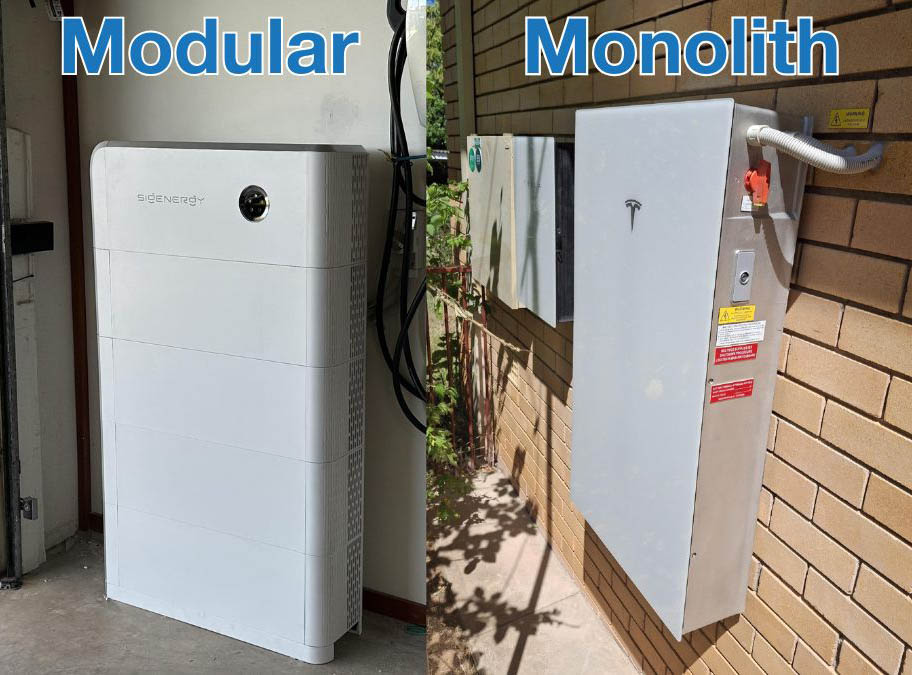
How do these two different type of solar battery systems compare?
| Feature | Monolith Systems | Modular Systems |
|---|---|---|
| Weight and Handling | ❌Heavy and bulky (100+ kg), requires two people to install. | ✅(Relatively) lightweight and stackable, manageable by one person. |
| Scalability | ❌Stacking possible but expensive and needs space | ✅Easily stackable; start as small as 2 or 3 kWh. |
| Cost Structure | ❌High upfront cost, may save later with single controller. | ✅Incremental capacity and cost increases, no big upfront expense. |
| Redundancy | ❌Limited; entire system may be affected by failure. ✅Fewer components; less risk of connection failure. | ✅High; other modules continue functioning if one fails. ❌More points of failure due to extra connections. |
How Much Do Modular Batteries Cost?
Modular batteries often offer more value for money. Let’s have a look at the most popular modular battery systems and how much they cost.
Sigenergy SigenStor
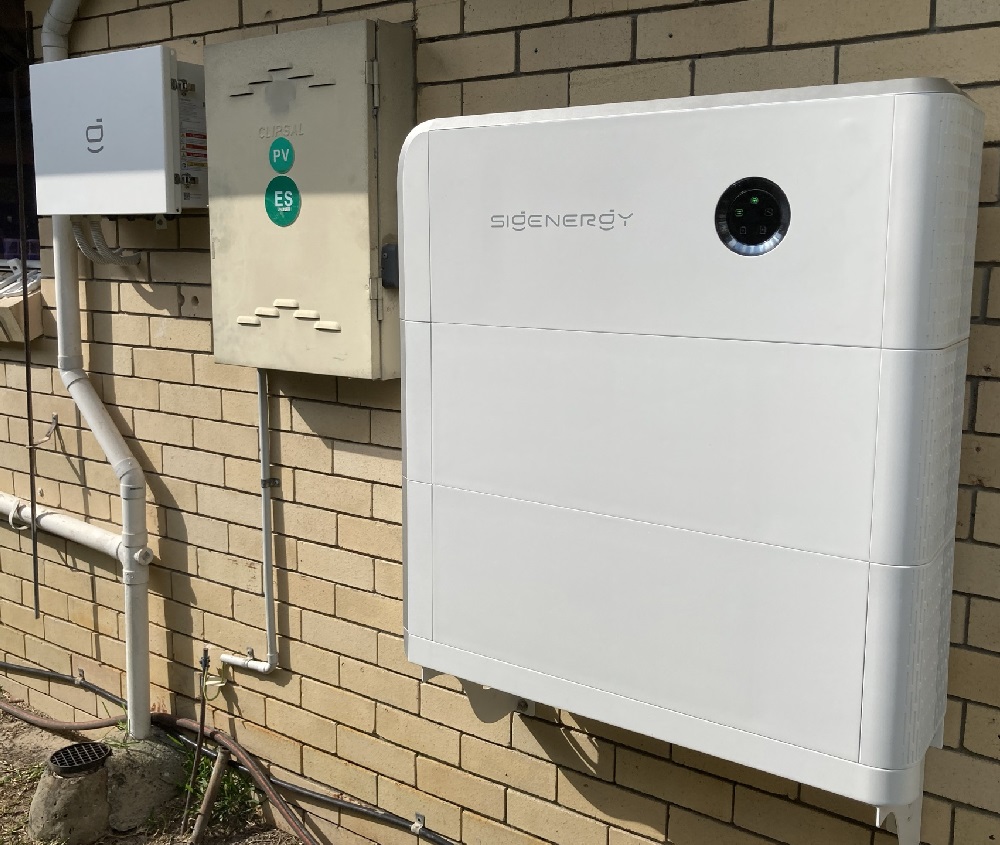
The SigenStor is perfect for adding batteries and EV chargers over time. Designed for users planning gradual upgrades. What makes the SigenStor system unique, is that it comes with a hybrid inverter, also in the form of a module.
Approx. Price excluding installation: $12,400 for 16 kWh (2 units of 8 kWh and hybrid inverter module)
Approx. Price per kilowatt-hour: $775 / kWh
Sungrow SBR Series
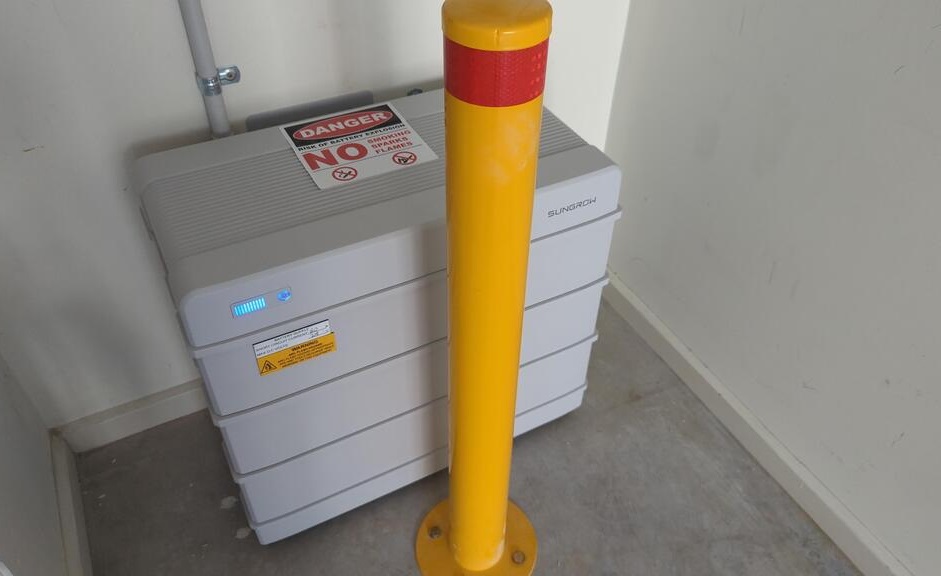
The Sungrow SBR modules have built-in handles making adding modules a breeze. Stackable to 26kWh with parallel stacking options for more storage.
Approx. Price excluding installation: $9,500 for 12.80 kWh (4 units of 3.2 kWh)
Approx. Price per kilowatt-hour: $740 / kWh
BYD B-Box Premium HVM/HVS Series
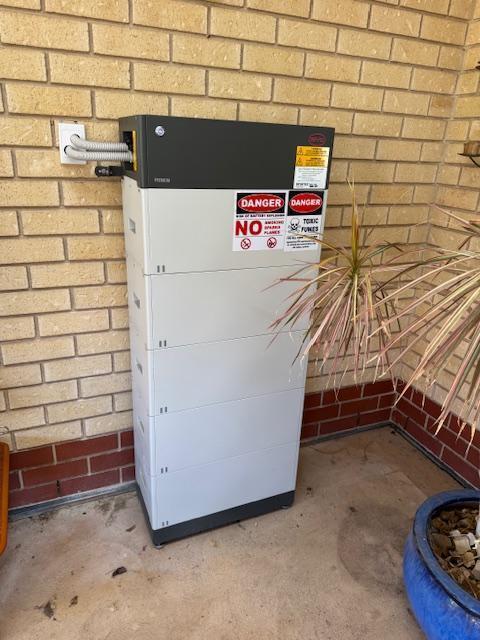
The BYD B-Box Premium HVM/HVS Series offers flexible configurations for different capacity needs. Modular and scalable for residential or commercial setups
Approx. Price excluding installation: $10,600 for 13.80 kWh (5 units of 2.76 kWh)
Approx. Price per kilowatt-hour: $770 / kWh
GoodWe Lynx Home F G2 Series
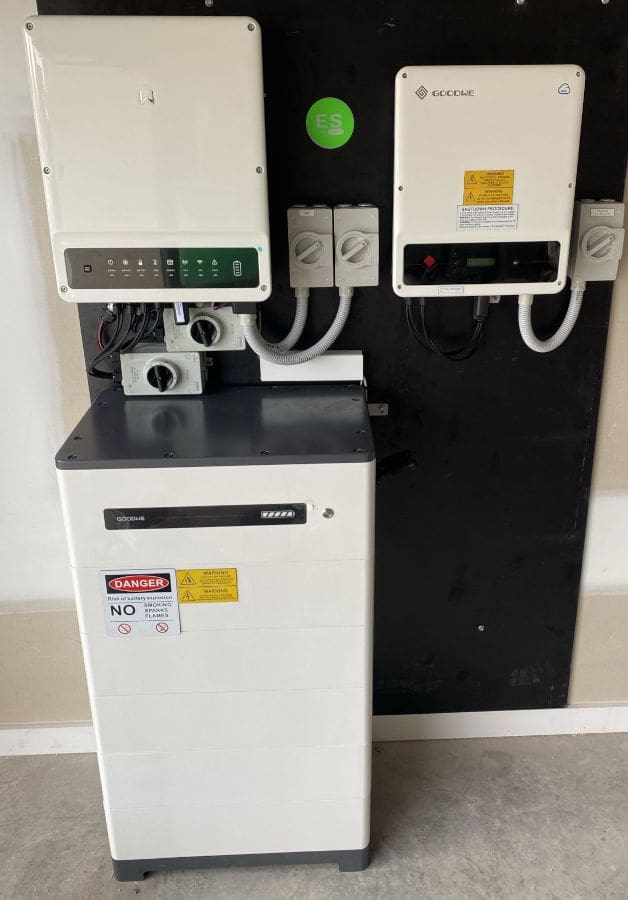
The GoodWe Lynx Home F G2 series also offers reliable, cost-effective modular energy storage. However, GoodWe doesn’t warrant batteries that aren’t commissioned together in a single installation, so while they’re scalable, technically they’re not expandable.
Approx. Price excluding installation: $8,100 for 12.80 kWh
Approx. Price per kilowatt-hour: $630 / kWh
How Do Modular Battery Prices Compare to the Price of Monolith Batteries?
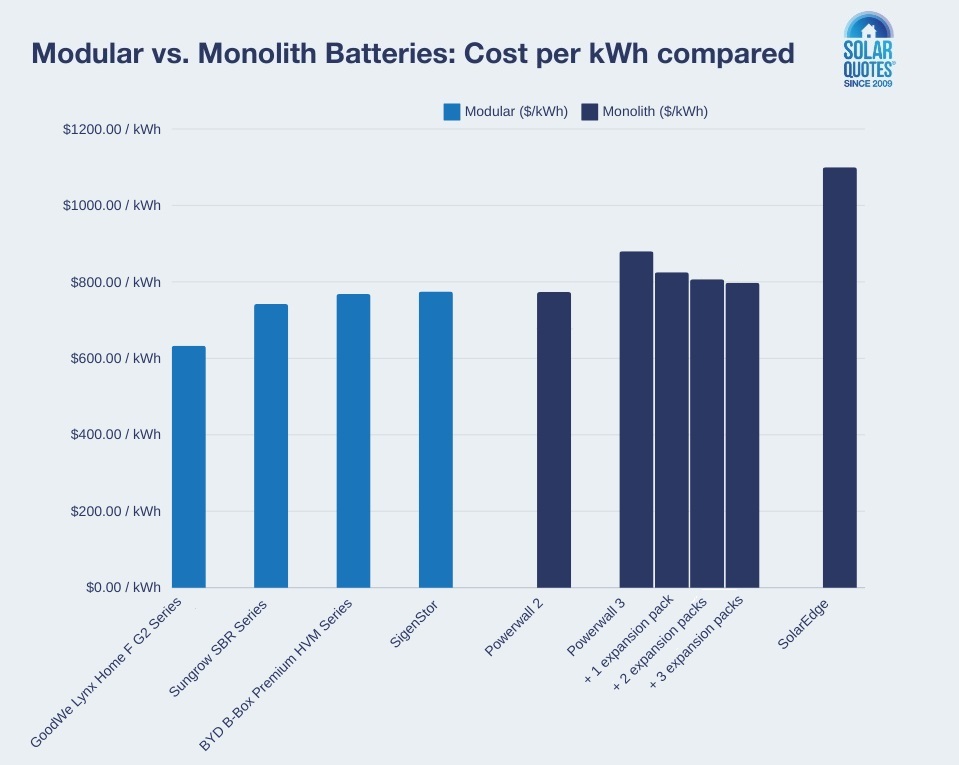
When comparing the cost per kWh against monolith batteries, they seem a bit cheaper per kWh. However, the Powerwall 3 will likely get cheaper per kWh per expansion pack added.
Tesla Powerwall 3
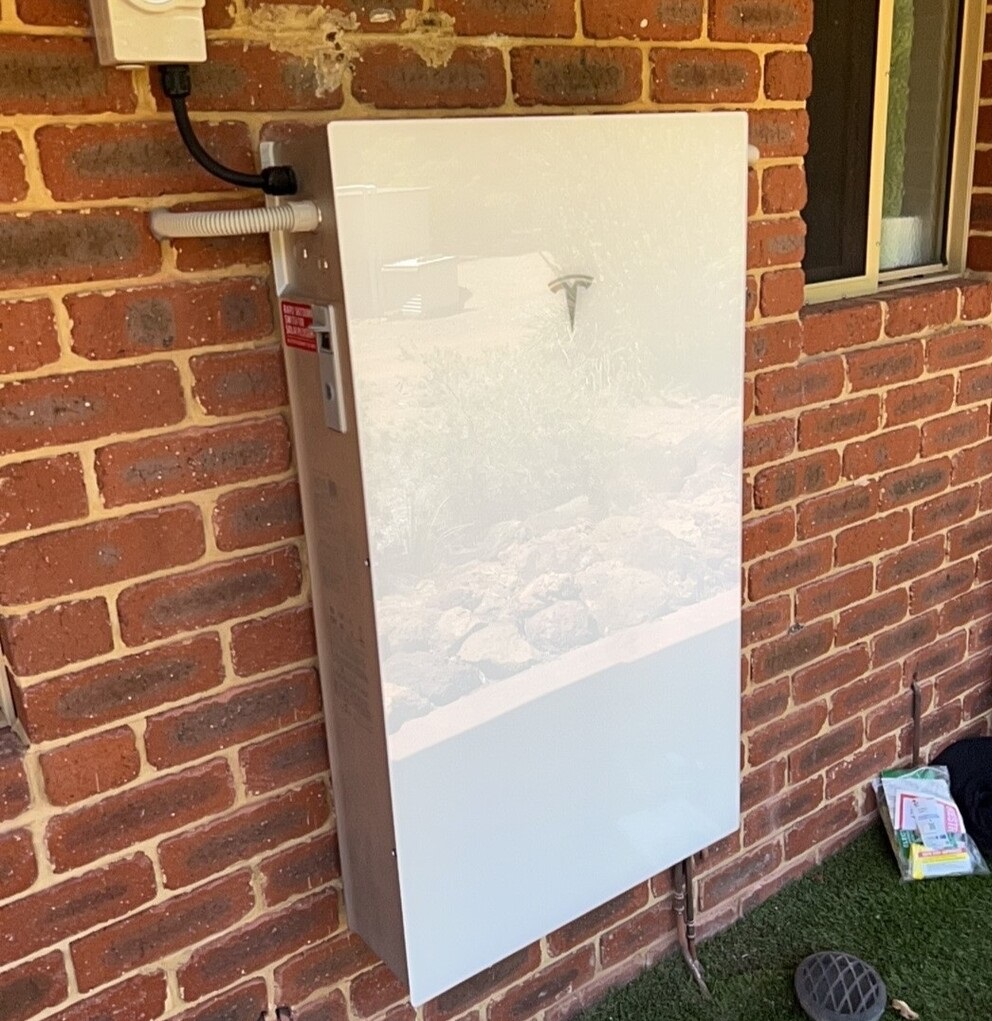
The Powerwall 3 expansion pack will be available in 2025. They will add another 13.5 kWh of capacity, but without the in-built inverter. Based on pricing differences in the US between the Powerwall 3 and their expansion pack, we estimate an expansion pack will be $1,500 cheaper. A Powerwall 3 can add up to 3 expansion packs. This means that per expansion pack added, your cost per kWh lowers a bit.
| Configuration | Approx. Price (Excl. Installation & Gateway) | Capacity (kWh) | Price per kWh |
|---|---|---|---|
| Powerwall 3 | $11,900 | 13.5 | $880 / kWh |
| Powerwall 3 + 1 Expansion Pack | $22,300 | 27 | $825 / kWh |
| Powerwall 3 + 2 Expansion Packs | $32,700 | 40.5 | $807 / kWh |
| Powerwall 3 + 3 Expansion Packs | $43,100 | 54 | $798 / kWh |
Modular Hybrid Inverters: The Perfect Partner
SigEnergy is leading the charge with their modular hybrid inverter. These inverters stack on top of their SigenStor battery modules and DC EV charger module . Here’s how it works:
- Start with just the inverter.
- Add batteries or an EV charger later when you’re ready.
- Your electrician simply drops the new modules into the stack. Easy peasy!
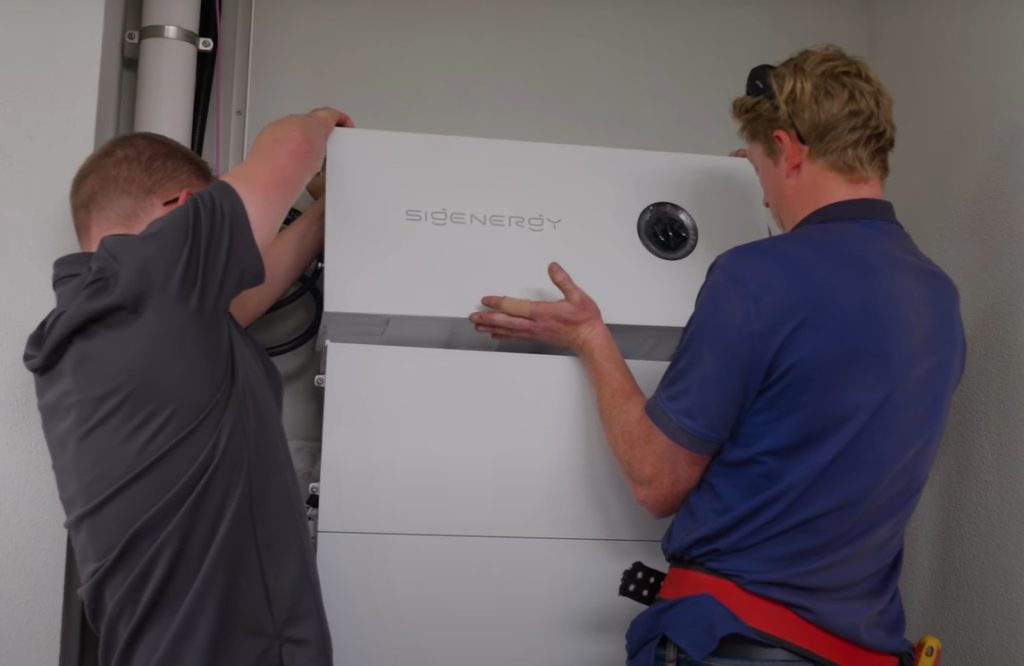
This setup is even quicker to install than wiring a traditional hybrid inverter next to your battery stack on the wall. Plus, it’s perfect if you’re planning staged upgrades.
Are Modular Battery Installations As Easy As They Sound?
Adding a new module to a modular battery is often marketed as plug-and-play, and real-world experiences show this promise holds up. In the video above you can see me and my Sungrow modular battery of 12.8kWh (four modules at 3.2kWh each). I wanted to add a fifth module a year later. The electrician simply removed the head unit, dropped the new module in, replaced the head unit, and commissioned the system in just 33 minutes.
If this had been a non-modular system, adding a second battery could take a whole day, due to the need for extra cabling and wiring. Modular systems save time and labour costs, making expansion much easier and more affordable.
Please note: if you want to add a new module to your Sungrow battery stack, all the existing modules need to match its state of charge. To save hours of waiting on the install day, my installer remotely conditioned the battery stack, bringing every module down to a 20% charge.
Conclusion
When choosing a modular battery system, it’s essential to consider both current and future needs. Look for systems that:
- allow meaningful expansion.
- come from reputable brands.
- align with DNSP regulations for solar and battery sizing.
Partnering with a technically competent installer ensures that your investment will meet your expectations both now and in the years to come. They will:
- recognise that each modular system varies in design and understand the details of the system you chose.
- ensure proper connections are made to avoid failures and maintain long-term reliability.
- plan your system’s setup with future expansion in mind, considering maximum capacity and compatibility.
- advise on how adding modules might impact your system’s warranty to help you avoid unexpected issues.